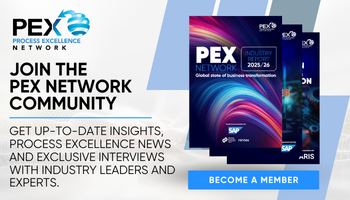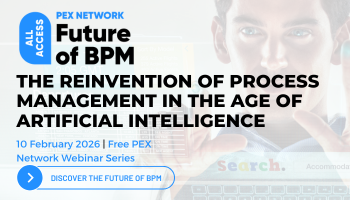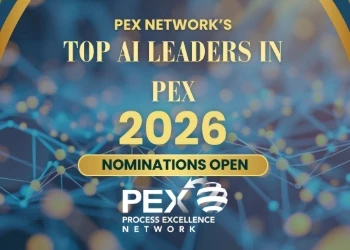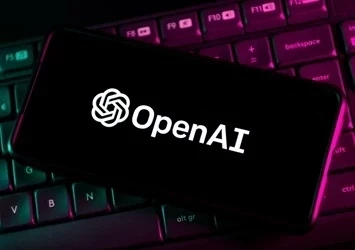Hype versus value: A 4-step guide to real-world AI strategy
The AI market now runs on two engines: The hype engine and the value engine. Leaders must not confuse one with the other
Add bookmark
The hard lesson my public sector leadership clients teach me every week is simple: reality is a brutal auditor. In a fluorescent meeting room at City Hall, there are no venture subsidies to back a thesis. New initiatives are judged by a single, unforgiving test: can this deliver a measurable, defensible outcome for the community?
Budgets, political headwinds and public accountability shape every decision. Those constraints forge durable strategy.
That same discipline is now, finally, being forced upon the broader artificial intelligence (AI) market. For years, the tech industry operated on an intoxicating fuel of capital and narrative, an era of seemingly limitless runway. Now, the hard realities of geopolitics (chip embargoes), infrastructure (datacenter energy) and operational physics are demanding something different. The market has split. It is now driven by two distinct and often conflicting engines: one that sells the future and another that ships the work. The job of a leader is not to choose between them, but to master both.
Join the PEX Network community

Don't miss any news, updates or insider tips from PEX Network by getting them delivered to your inbox. Sign up to our newsletter and join our community of experts.
Learn MoreThe AI market now runs on two engines
The hype engine births narratives, capital and rapid valuation moves (think Opendoor’s stock surge). The value engine quietly produces measurable, defensible results (think DeepMind’s Perch 2.0 for conservation).Leaders fail when they confuse one for the other.
This article provides a four-step ‘gearbox’ you can use to harness hype, protect value projects and govern AI under the real-world constraints of chips, energy and geopolitics.
Deconstructing the hype engine (the Opendoor lesson)
Hype isn’t a bug, it’s a powerful market mechanism that should be understood and respected, not dismissed. It creates a simple, legible story that pulls in the immense gravitational force of talent and capital required for moonshots.
Take Opendoor: a company narrative that masterfully folded AI into its core operations of pricing, marketing and home inspections helped spark a dramatic, narrative-driven stock surge. The company’s story was compelling and the market responded with a surge of attention and capital, creating a feedback loop that seemed to validate the vision
This is the hype engine operating at peak performance. It is a powerful force for mobilizing resources. The trap for operational leaders, however, is mistaking market perception for operational reality. A rising stock price is not a key performance indicator for a business process. A compelling demo is not a solved workflow. The significant short interest from skeptical investors in Opendoor signals a deep uncertainty about whether the company’s underlying operations can ever fully deliver on the promises of its financial narrative
Leaders must treat hype as a powerful weather system to be forecasted and planned for, not as the foundation upon which to build their house.
Deconstructing the value engine (the Perch 2.0 lesson)
While the hype engine makes the headlines, the value engine builds the enterprise. Its work is unsexy but unstoppable. DeepMind’s Perch 2.0, for instance, is not an industry manifesto, it’s a surgical tool that helps conservation scientists build sophisticated sound classifiers in under an hour from a single audio sample. This is not a story about “transforming conservation.” It is a story about solving one specific, high-friction problem for a specific user.
This is the value engine. It runs on a different fuel: disciplined execution, clear “contracts for done” and measurable, operational KPIs. Its success is not measured in press cycles, but in workflow improvements and defensible data. In the case of Perch 2.0, a scientist’s workflow is accelerated, a new dataset is created and our collective ability to monitor endangered species is tangibly improved. These are the kinds of durable, defensible gains that create lasting value.
The primary difficulty for leaders is that value engine projects rarely win the internal attention wars. They must compete for scarce budget and executive mindshare against the spectacular promises of the hype engine. A leader’s most critical job is to protect these quiet, high-certainty bets, providing them with the cover they need to prove their worth and build the foundation for the next stage of growth.
Register for All Access: AI in Business Transformation 2025!
Where the hype engine breaks (the hard constraints)
Both engines eventually collide with the hard, physical and political constraints of the real world. It is at this point that a strategy built purely on hype shatters.
- Geopolitics: A production stop or export ban on a single supplier’s AI chips can collapse a strategy built on one vendor. Nvidia’s decision to halt production of its H20 AI chip for China is a stark reminder that the AI supply chain is a strategic geopolitical asset, not a simple commodity. A resilient operational strategy must treat the supply chain as a variable to be managed, not an assumption to be made.
- Physics and energy: The per-prompt cost of a model may be low, but at scale, the energy and datacenter footprint is not. Google’s disclosure on the energy and carbon cost of a Gemini prompt sets a new standard for transparency. An operational strategy must include a “total resource cost of ownership” that accounts for the immense, long-term costs of compute and cooling.
- Regulation and reputation: Platforms can change, regulations can be enacted and lawsuits can remove entire markets overnight. A strategy that ignores the shifting legal and ethical landscape is building on unstable ground.
A durable AI strategy must be built with these realities as non-negotiable inputs.
4 steps to connect AI hype to value
You cannot, and should not, kill the hype engine. It funds possibility. Your job is to be the gearbox: to translate the powerful but chaotic energy of the hype engine into the disciplined, forward motion of the value engine.
Here is a four-step framework for doing exactly that.
1. Map the story to the job (1 hour)
Your first task is to act as a translator. Take the ambitious executive narrative (“AI will revolutionize our customer inspections”) and translate it into a concrete, measurable operational hypothesis. This is a simple but critical act of grounding. The hypothesis must be specific: “we will deploy a specialized AI agent to reduce our average inspection report cycle time by 30 percent within six months, without decreasing our quality score.” This moves the conversation from a vague vision to a testable premise.
2. Protect a minimal viable value project (2 – 6 weeks)
Using the political cover and budget from the hype engine, fund a single, surgically focused pilot with a non-negotiable “contract for done.” This contract must define the inputs, the outputs, the single success metric and a hard cap on the run cost. Aggressively defend this pilot from the feature creep and scope expansion that plague so many AI projects. Its goal is not to solve the entire problem, but to prove a single, high-value part of the hypothesis quickly and cheaply.
3. Measure and publish real KPIs (ongoing)
The value engine runs on a different set of metrics. Instead of tracking headlines, track the non-dramatic numbers that matter to operations: time-to-first-usable-output, error rate reduction, cost per useful inference and your governance compliance score. These are the numbers that prove the business case. Your job is to publish these operational KPIs to leadership, relentlessly and transparently. This builds credibility and provides the data needed to make informed decisions about the next phase of investment.
4. Recycle the narrative with evidence (quarterly)
This is the final, crucial step in the gearbox. You must take the validated, defensible metrics from your successful value engine pilots and feed them back into the hype engine. This is how you earn the right to make bigger bets. You go back to the executive team not with more promises, but with proof of execution. This allows you to secure targeted funding and political cover for the next, more ambitious value-creating step, creating a virtuous cycle where real results fuel the next wave of ambitious storytelling.
A quick checklist for your next AI strategy meeting:
- Do we have at least one concrete operational hypothesis that is directly linked to the high-level executive narrative?
- Is there a small, protected and funded micro-pilot with a clear, measurable exit criterion?
- Have we budgeted for compute, energy and supply chain contingency as part of our total cost of ownership?
- Do we publish weekly or monthly operational KPIs to the executive team, not just project status updates?
The leader’s covenant
The work of leadership in this new era is the work of stewardship. It is the same work I see the directors in my City Hall cohort doing every day: managing finite resources, making difficult trade-offs and holding themselves accountable for delivering real-world outcomes.
The test of your leadership in the age of AI won’t be whether you bought into the hype. It will be whether you successfully governed your investment. Your job is to be the gearbox, translating ambitious stories into executable pilots, protecting the quiet work that proves value and then using that value to earn the right to build the future. That is how you keep your promise to your team, your company and the communities you serve.
All Access: Future of BPM 2026

You asked, and we listened. Business process management (BPM) remains the cornerstone technology for driving organizational transformation, according to the survey results featured in the latest PEX Report. As we look toward 2026 and beyond, generative AI, agentic AI, and intelligent process orchestration are redefining how processes are designed, executed, and optimized. BPM is your key to adapting swiftly and effectively in this new era.
PEX Network is bringing together industry leaders, technology innovators, and thought leaders to answer your biggest questions and explore the advancements reshaping business today. And you're invited. Register for free to save your spot now!
Register Now























